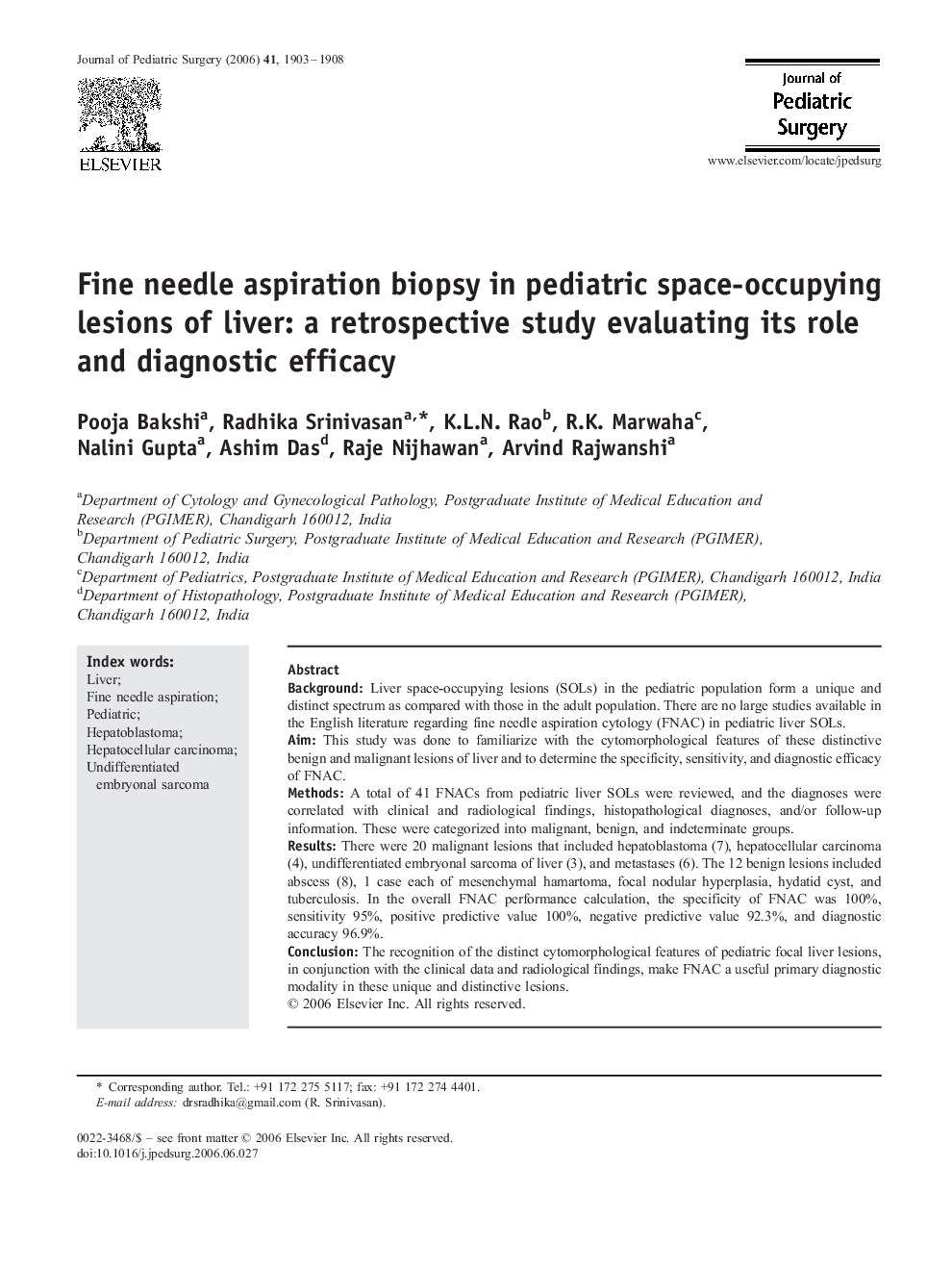| Article ID | Journal | Published Year | Pages | File Type |
|---|---|---|---|---|
| 4160186 | Journal of Pediatric Surgery | 2006 | 6 Pages |
BackgroundLiver space-occupying lesions (SOLs) in the pediatric population form a unique and distinct spectrum as compared with those in the adult population. There are no large studies available in the English literature regarding fine needle aspiration cytology (FNAC) in pediatric liver SOLs.AimThis study was done to familiarize with the cytomorphological features of these distinctive benign and malignant lesions of liver and to determine the specificity, sensitivity, and diagnostic efficacy of FNAC.MethodsA total of 41 FNACs from pediatric liver SOLs were reviewed, and the diagnoses were correlated with clinical and radiological findings, histopathological diagnoses, and/or follow-up information. These were categorized into malignant, benign, and indeterminate groups.ResultsThere were 20 malignant lesions that included hepatoblastoma (7), hepatocellular carcinoma (4), undifferentiated embryonal sarcoma of liver (3), and metastases (6). The 12 benign lesions included abscess (8), 1 case each of mesenchymal hamartoma, focal nodular hyperplasia, hydatid cyst, and tuberculosis. In the overall FNAC performance calculation, the specificity of FNAC was 100%, sensitivity 95%, positive predictive value 100%, negative predictive value 92.3%, and diagnostic accuracy 96.9%.ConclusionThe recognition of the distinct cytomorphological features of pediatric focal liver lesions, in conjunction with the clinical data and radiological findings, make FNAC a useful primary diagnostic modality in these unique and distinctive lesions.
